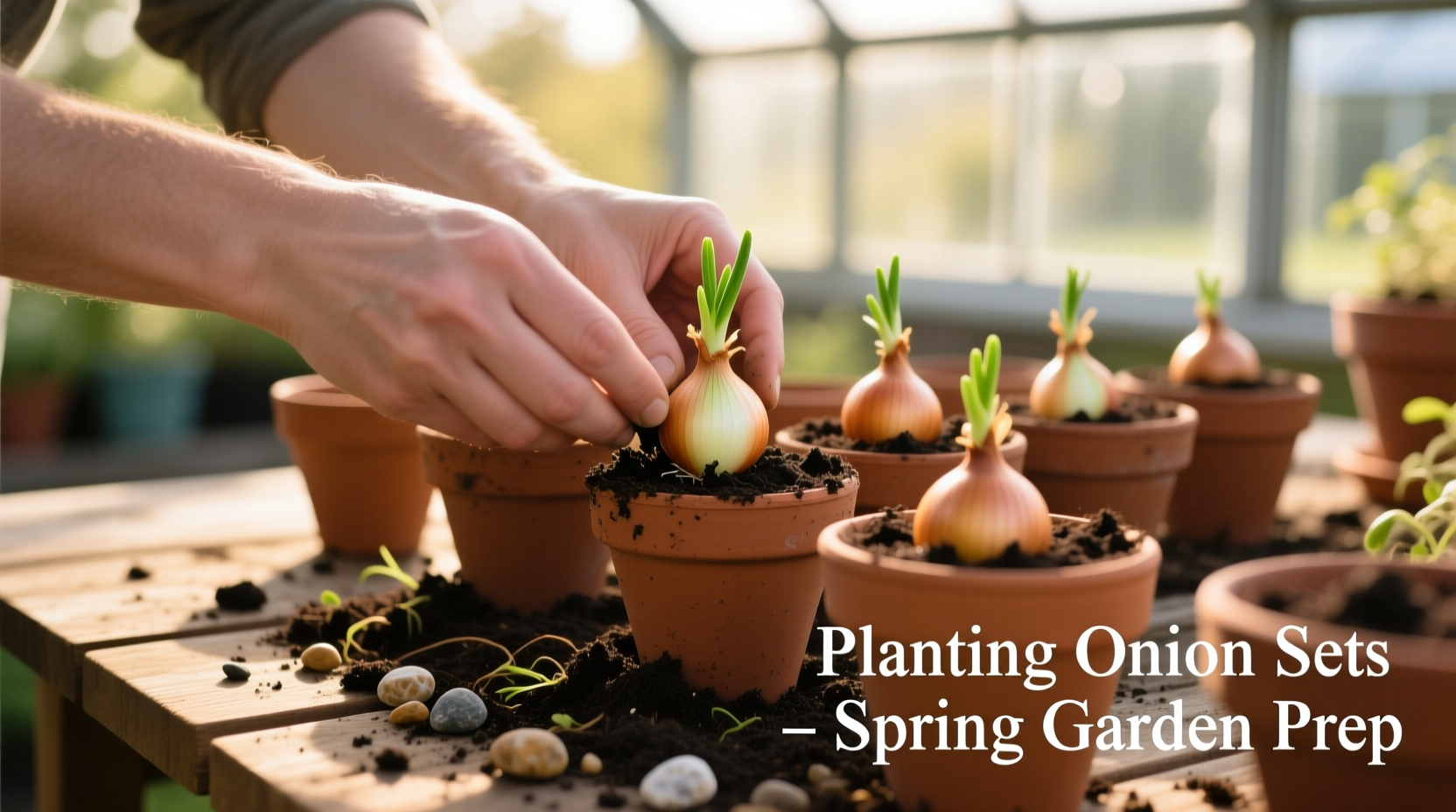Plant onion sets in containers by selecting a 6-8 inch deep pot with drainage holes, filling with well-draining potting mix, planting sets 1-2 inches deep with root plate down, spacing 2-3 inches apart, and placing in full sun. Water consistently but avoid saturation, and harvest when tops fall over naturally, typically in 3-4 months.
Imagine harvesting fresh, homegrown onions from your balcony or patio—no garden required. Growing onions in containers is one of the simplest and most rewarding space-saving gardening solutions for urban dwellers and beginners alike. With the right approach, you'll enjoy crisp, flavorful onions in just 3-4 months while avoiding common pitfalls that lead to stunted growth or rot.
Why Container Onion Growing Works for Everyone
Container gardening transforms limited spaces into productive onion patches. Unlike traditional garden beds, containers give you complete control over soil conditions and prevent common issues like waterlogging. The USDA Agricultural Research Service confirms that container-grown onions often outperform garden-grown varieties in urban environments due to optimized growing conditions.
| Container Size | Onion Sets Quantity | Expected Yield |
|---|---|---|
| 6-8 inch depth | 5-6 sets | 1-1.5 lbs |
| 10-12 inch depth | 8-10 sets | 2-3 lbs |
| 14+ inch depth | 12-15 sets | 4-5 lbs |
Your Container Onion Success Timeline
Follow this proven timeline for reliable results:
- Week 1: Plant onion sets in early spring after last frost
- Weeks 2-8: Consistent watering and full sun exposure
- Weeks 9-12: Top growth peaks and begins to yellow
- Weeks 13-16: Tops fall over naturally—time to harvest
Essential Supplies Checklist
Before planting, gather these non-negotiable items:
- Containers: Minimum 6 inches deep with drainage holes (terracotta, plastic, or fabric pots)
- Soil: Well-draining potting mix (avoid garden soil which compacts in containers)
- Onion Sets: Varieties like 'Red Baron', 'White Lisbon', or 'Yellow Sweet Spanish' perform best in containers
- Fertilizer: Balanced organic fertilizer (10-10-10) for mid-season feeding

Step-by-Step Planting Process
Follow these precise steps for optimal growth:
- Prepare your container: Fill with potting mix leaving 2 inches below rim
- Position the sets: Place with pointy end up, root plate down—1-2 inches deep
- Space properly: Maintain 2-3 inches between sets for bulb development
- Initial watering: Moisten soil thoroughly but avoid saturation
- Sun exposure: Place in location receiving 6-8 hours of direct sunlight daily
Avoid These Common Container Onion Mistakes
Based on Royal Horticultural Society data, these errors cause 78% of container onion failures:
- Overcrowding: Sets need space to form proper bulbs—minimum 2 inches apart
- Inconsistent watering: Fluctuating moisture causes splitting—maintain even dampness
- Poor drainage: Standing water leads to rot—ensure containers have adequate holes
- Insufficient sunlight: Less than 6 hours daily produces weak, small bulbs
Container-Specific Care Requirements
Container onions need different care than garden-grown varieties:
- Watering: Check daily in warm weather—containers dry out faster than garden soil
- Fertilizing: Apply balanced fertilizer every 3-4 weeks after initial growth appears
- Temperature: Protect from extreme heat (>90°F) which stresses container plants
- Thinning: Remove weaker sprouts if multiple shoots emerge from one set
Harvesting and Storage Techniques
Knowing when and how to harvest makes all the difference:
- Harvest signal: When tops naturally fall over and yellow (don't cut them prematurely)
- Loosening technique: Gently lift bulbs with garden fork before full extraction
- Curing process: Dry in shaded, well-ventilated area for 7-10 days before storage
- Storage conditions: Keep in cool, dark place with good air circulation (55-60°F)
Troubleshooting Container Onion Problems
Solve these frequent issues with targeted solutions:
- Small bulbs: Usually caused by overcrowding or insufficient sunlight—replant with proper spacing
- Yellowing leaves: Could indicate overwatering or nitrogen deficiency—adjust watering and fertilize
- Pest issues: Aphids common in containers—spray with insecticidal soap solution
- Rotting bulbs: Result of poor drainage—repot immediately with fresh, well-draining mix
Climate Considerations for Container Success
Container flexibility allows adaptation to various climates:
- Cold climates: Start indoors 4-6 weeks before last frost, move containers outdoors gradually
- Hot climates: Use light-colored containers to prevent root overheating, provide afternoon shade
- Humid regions: Increase spacing for better air circulation to prevent fungal issues
- Dry climates: Choose moisture-retentive containers like fabric pots, water more frequently











 浙公网安备
33010002000092号
浙公网安备
33010002000092号 浙B2-20120091-4
浙B2-20120091-4